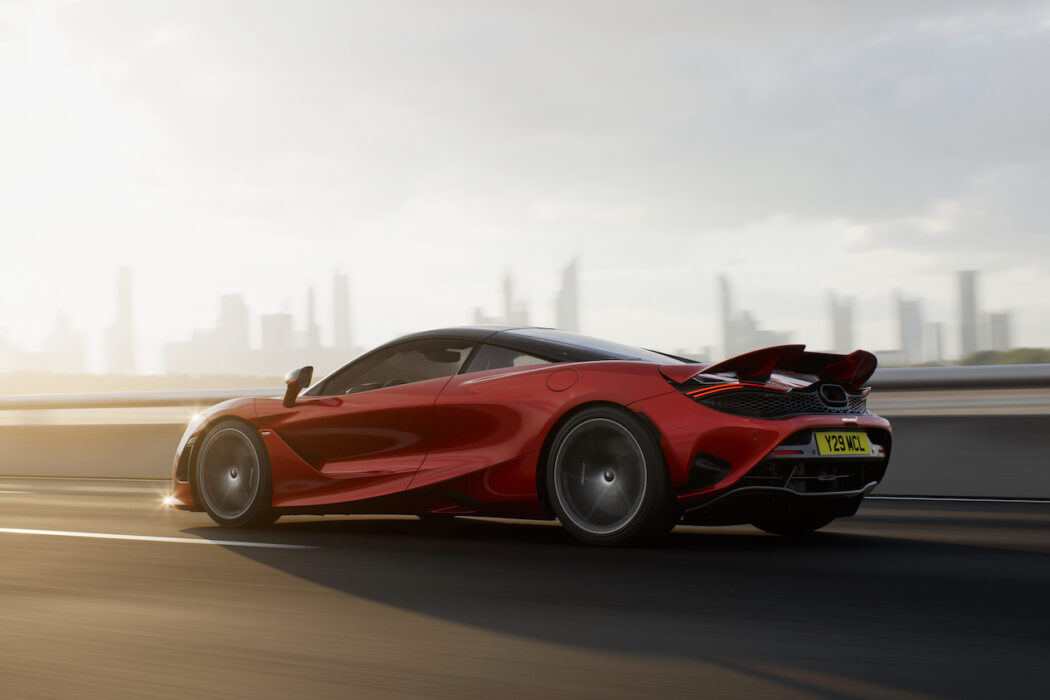As will have been fairly obvious from my editorial in this latest issue of the magazine, I am a huge fan of the Mclaren 720S. In fairness, I am pretty sure that everyone who has ever driven one is a fan of the Mclaren 720S. Faster than a speeding bullet, or even perhaps a bullet train.
The 720S seemed to herald a new paradigm as to what was possible from the so-called ‘supercar’. We are, however, now a full six years since its launch, and whilst the figures haven’t diminished, it’s simply not in the Mclaren DNA to just sit still. They’re all about moving forward, and doing so at pace.
An email lands in my inbox from the friendliest of people at Mclaren, inviting me to a heavily embargoed visit to the Mclaren Technology Centre for the reveal of something special. Interest is most certainly piqued. What could that be? I was perhaps too heady from the glory of the mere invitation to place much thought as to what that product may be. All manufacturers seem to have a penchant for producing an ever-greater number of special editions and limited-run cars, and the cynic in me suspected this may follow that obviously expensively-tailored suit.
Champagne in hand, I stroll the boulevard – a sight that still gets me each and every time I’m there. The kid in me comes out in full force, and I bounce joyfully from one car to the next. A carbon-bodied 765LT, perhaps? Or XP1 – the first Le Mans F1 car – factory converted for road use sits next to XP5, which takes pride of place. By now, I am the only one still out here and thus holding up proceedings, I am ushered to a studio tucked behind the reception suite that houses the Artura.

750S. The replacement for the venerated 720S is positioned in pride of place atop a well-lit stage, resplendent in a fierce, deep red. This is very much a progression and refinement of the best attributes that we saw on the 720S, and remarkably, the car now has 750Hp (who saw that coming?).
It turns out that the number thirty is actually quite important; the 750S is 30Hp more powerful, offers an extra 30 Nm of torque and weighs in at 30 kg less than the car that it replaces. At this, the sharp end of the market, it’s much akin to motorsport – here, the smallest gains are sought and performance is honed as closely to perfection as possible. Lightweight carbon-backed racing seats save over 17kg, and a set of lightest forged alloy wheels fitted to a standard production Mclaren save an additional 13.8kg.
Physically, it looks much like the car that it replaces, but stare deeply into that front end and one starts to see how the form of the 750S has progressed. Smaller eyelets are juxtaposed against a larger front splitter, and an enclosed nose cone gives real purpose to the front-end styling. Sill air intakes seen on the 765 are added, as are rear aero additions through rear arch vents. A redesigned and lengthened rear deck is featured, channelling air towards the also raised and lengthened carbon fibre active rear wing. This weight-saving continues across the models with the Spider adding a mere 49 kg of weight over that of the coupe.

What does this add up to? Well, I can only wait and see what the real-world performance is, but knowing the performance of the 720S, I can only imagine how the 750S will feel. The carbon fibre Monocage II-S remains, as does the in-house twin-turbo v8. Both, again, are tweaked to optimal performance, meaning the 750S is the lightest and most powerful series-production Mclaren. Added to the weight saving mentioned above, this means that the sprint to 62 mph is completed by both the coupe and spider in an eye blink of 2.8 seconds, and the sprint to 124 mph is dispatched in 7.2 seconds in the coupe, with the Spider following behind only a tenth of a second later.
To ensure progress is as swift as possible, suspension and set-up changes have also been made. Now in its third iteration, McLaren’s Proactive Chassis Control linked-hydraulic suspension gives even higher levels of suspension performance and body control. Suspension springs are softer at the front and stiffer at the rear than seen on the 720S. This is combined with a new tuning approach for the suspension, adjusting the accumulators in the struts, all of which adds up to gains in comfort, roll control, steering feedback and cornering balance. Maintaining electro-hydraulic steering now has a faster steering ratio and a new power assistance pump.

Internally, the 750S is very much a progression. Livability has obviously been taken on board with Apple CarPlay, for instance (now included on all vehicles), taking away one gripe that could possibly have been levied at the 720S in terms of everyday usability. The instrument display is connected to the steering column and moves with it, always remaining in the optimal position. Following the Artura, powertrain and handling modes are selected via a binnacle located on either side of the instrument panel, meaning ease of access and clarity are both improved for the driver.
The Mclaren Control Launcher also debuts on the 750S; activated through a single button press, it allows the driver to select a preferred pre-selected combination of modes for aero, handling, powertrain and transmission settings. These everyday improvements stand to truly take the 750S to a new level of usability, not that the 720S had massive issues as such. With factors such as axle lift now being a sunshine-loving four seconds rather than the 720S’ 10 seconds, and an improved rear parking camera in place, there are multiple real-world improvements that may not take the headlines, but will keep purchasers firmly in the driver’s seat and the 750S in the heated garage.

In a nod to the sheer breadth of usability, those customers who want to live the Formula 1 dream can upgrade to a track brake upgrade, engineered using ceramic discs and monobloc callipers developed from the brakes seen on the track-focussed Senna. These are combined with a new brake booster, vacuum pump and calliper cooling inspired by the company’s experience in Formula 1. Super-lightweight Carbon Fibre Racing Seats, Pirelli P ZERO Trofeo R tyres and lightweight titanium wheel bolts add to the track focussed options list. The 750S certainly continues its predecessor’s multi-range abilities, and does so with no insignificant improvements in many areas.
That the 720S was quite so good means that the 750S has a lot to live up to. Knowing how they do it down in Woking, I have absolute faith that the 750S – in both coupe and Spider form – will be an absolute barnstormer.


